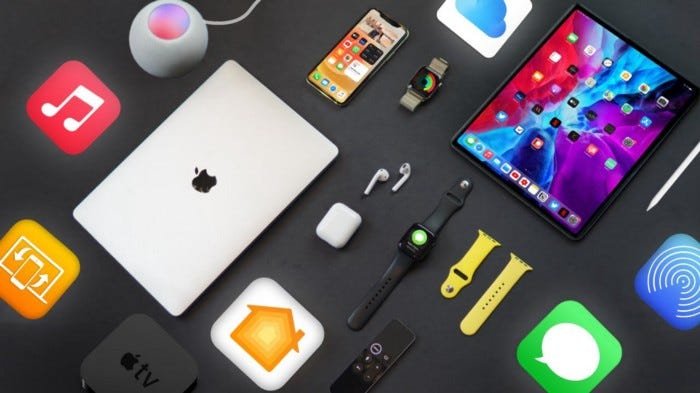In a world where finance has become increasingly complex and digital, Apple has brought a new kind of simplicity and design innovation with its very own credit card: the Apple Card. Introduced in August 2019, the Apple Card marked the tech giant’s foray into the world of finance, offering a seamless and tech-centric approach to managing personal money. It stands out not only as a credit card but also as a tool for modern financial management. By blending design, privacy, and technology, the Apple Card has made a mark in an industry traditionally dominated by financial institutions.
In this comprehensive exploration, we will delve into the various aspects of the Apple Card, its features, benefits, user experience, privacy considerations, and its overall impact on the financial services industry.
The Origin and Vision of the Apple Card
Apple has always been a company that aims to redefine the user experience, whether it’s through innovative hardware, software, or services. The Apple Card is no exception. Before its introduction, credit cards were typically seen as merely a financial tool for making purchases, accumulating points, or managing debt. Apple saw an opportunity to transform this by applying its core principles of simplicity, transparency, and integration. The result was a credit card that not only functions like any other but also serves as an extension of the Apple ecosystem.
The Apple Card is issued in partnership with Goldman Sachs, a well-established financial institution, and MasterCard, which provides global acceptance. This collaboration brings together Apple’s technology expertise, Goldman Sachs’ financial acumen, and MasterCard’s extensive network, forming a trifecta that has allowed Apple to provide an innovative and consumer-centric product.
Design and Aesthetic

One of the first things that set the Apple Card apart from other credit cards is its design. As expected from Apple, the physical card is a piece of art. The Apple Card is crafted from titanium and features a minimalist design. It lacks any card number, expiration date, or CVV (Card Verification Value) on the surface, creating a sleek, clean look that is uniquely Apple. Instead, the user’s name is engraved on the front, and the iconic Apple logo is subtly etched in a metallic finish.
While the physical card is certainly appealing, Apple’s main focus is on the digital experience of the card, which is integrated directly into the iPhone’s Wallet app. The card’s presence in the Wallet app is visually engaging, using vibrant color gradients to represent different spending categories and providing a comprehensive, easy-to-understand overview of transactions.
Features and Benefits of the Apple Card
The Apple Card is designed to offer several benefits, especially for those already embedded in the Apple ecosystem. Some of the standout features include:
1. Daily Cash Rewards: Apple Card’s rewards program, known as Daily Cash, is straightforward and transparent. Unlike traditional rewards that might take a month to be credited, Daily Cash is earned instantly on purchases and can be used right away. Users earn:
3% Daily Cash on purchases made directly with Apple, including the Apple Store, Apple Music, Apple TV+, App Store, and other Apple services.
3% Daily Cash on purchases with select partners, such as Uber, Uber Eats, Nike, and Walgreens.
2% Daily Cash on any purchases made using Apple Pay, whether in-store or online.
1% Daily Cash on purchases made with the physical Apple Card.
The rewards are simple and delivered in the form of real cash, not points or miles that need to be redeemed or converted. Users can apply Daily Cash to their Apple Cash balance, use it to make purchases, or transfer it to a bank account.
2. No Fees: The Apple Card stands out in the market by eliminating many of the common fees associated with credit cards. There are no annual fees, late fees, international fees, or over-limit fees. This lack of fees reduces the stress of hidden costs and provides a clear understanding of what users owe.
3. Transparency and Privacy: Transparency is another core feature of the Apple Card. The Wallet app displays transactions clearly, categorizes them with color coding, and provides location data for each purchase. This helps users track their spending habits more easily. Privacy, as always with Apple, is a key consideration. The Apple Card’s digital number is stored securely in the device’s Secure Element, and a unique dynamic security code is generated for each transaction. This, combined with Face ID or Touch ID authentication, ensures that user data remains private and protected.
4. Innovative Payment Management: Apple offers a novel way to view and manage payments. The Wallet app uses color-coded charts to show users how much interest they will pay based on different payment amounts, encouraging them to pay off more of their balance and minimize interest charges. This is part of Apple’s broader goal to help customers make informed financial decisions.
5. Seamless Integration with Apple Ecosystem: As part of the Apple ecosystem, the Apple Card integrates perfectly with the iPhone and other Apple devices. All features, from viewing statements to making payments, are done within the Wallet app, providing a unified user experience. It also works seamlessly with Apple Pay, allowing users to make secure and contactless payments in stores, apps, and online.
User Experience and Usability
The user experience of the Apple Card sets it apart from traditional credit cards. Everything from the application process to account management is streamlined and easy to navigate. Applying for the card is done entirely through the Wallet app, and most users receive a decision within minutes. Once approved, the digital card is instantly available for use via Apple Pay, with the physical titanium card arriving a few days later.
The card’s integration within the Wallet app provides a comprehensive view of transactions, payments, and rewards. The color-coded spending categories help users visually identify their spending habits, making it easier to manage finances. Furthermore, Apple’s emphasis on security is evident through features such as Face ID and Touch ID for authentication, as well as the dynamic CVV code generated for each transaction, which prevents misuse of card information.
Security and Privacy: A Commitment to Protecting User Data
When it comes to privacy and security, Apple has a distinct advantage. The Apple Card was designed with privacy in mind, ensuring that neither Apple nor Goldman Sachs knows where a user shopped, what they bought, or how much they spent. This commitment to privacy is an extension of Apple’s broader philosophy of protecting user data.
The card number is stored in the Secure Element on the iPhone, a hardware chip used solely for storing sensitive data. For every transaction, a unique device number and a one-time dynamic security code are used. Furthermore, the use of Face ID, Touch ID, or a secure passcode provides an additional layer of protection.
If a user loses their device, they can lock the card or remove it entirely from their Wallet app remotely using the Find My app. This level of control and security is uncommon among traditional credit cards and demonstrates Apple’s commitment to ensuring the highest levels of user protection.
Impact on the Financial Industry

The launch of the Apple Card has had a notable impact on the financial services industry, prompting both traditional banks and fintech companies to rethink their offerings. While Apple is not the first tech company to delve into finance (PayPal and Square have been offering financial services for years), its entry into the market with a credit card is significant due to its scale and brand influence.
The Apple Card’s emphasis on transparency, privacy, and user experience has pushed traditional financial institutions to consider similar innovations. Some banks have started to reevaluate their fee structures, while others have begun to focus more on the digital experience and integration with smartphones. Furthermore, the seamless integration with the Apple ecosystem has made it easier for users to adopt Apple Pay, contributing to the growing popularity of digital wallets.
Challenges and Criticisms
Despite its many strengths, the Apple Card is not without its criticisms. One of the main concerns is that it is primarily geared towards individuals already embedded in the Apple ecosystem. Since it is managed through the Wallet app, Android users are effectively excluded from accessing the card. Additionally, while the Daily Cash rewards are straightforward, the reward rates may not be as high as those offered by some premium credit cards, especially for categories like travel or dining.
Moreover, some have noted that the emphasis on using Apple Pay for the higher 2% rewards rate may limit the card’s utility in regions or stores where Apple Pay is not widely accepted. The reliance on the digital Wallet app for most card functions, while convenient, also means that users need to have an iPhone to access their card management tools, making it inaccessible in situations where their phone is lost or out of battery.
The Future of the Apple Card
The Apple Card represents just the beginning of Apple’s journey into financial services. Its success has laid the groundwork for potential future products, such as Apple Cash or even broader banking services. With Apple’s focus on innovation and user experience, it would not be surprising to see more financial offerings in the coming years, such as personal loans, investment options, or even partnerships with more merchants to expand the 3% Daily Cash categories.
Furthermore, as technology continues to evolve, Apple’s ability to leverage machine learning, artificial intelligence, and integration with other devices like the Apple Watch or MacBook could lead to new features that enhance the user experience and offer even more value.
Conclusion
The Apple Card is more than just a credit card; it’s a modern financial tool that embodies Apple’s principles of simplicity, transparency, and innovation. By offering a unique blend of technology, privacy, and user experience, the Apple Card has set a new standard for what a credit card can be. While it may not replace every other card in your wallet, it is certainly an appealing choice for those who prioritize a seamless digital experience and are committed to the Apple ecosystem.
As Apple continues to refine and expand its financial offerings, it is likely that the Apple Card will play a central


1 thought on “The Apple Card: A Revolutionary Approach to Personal Finance”